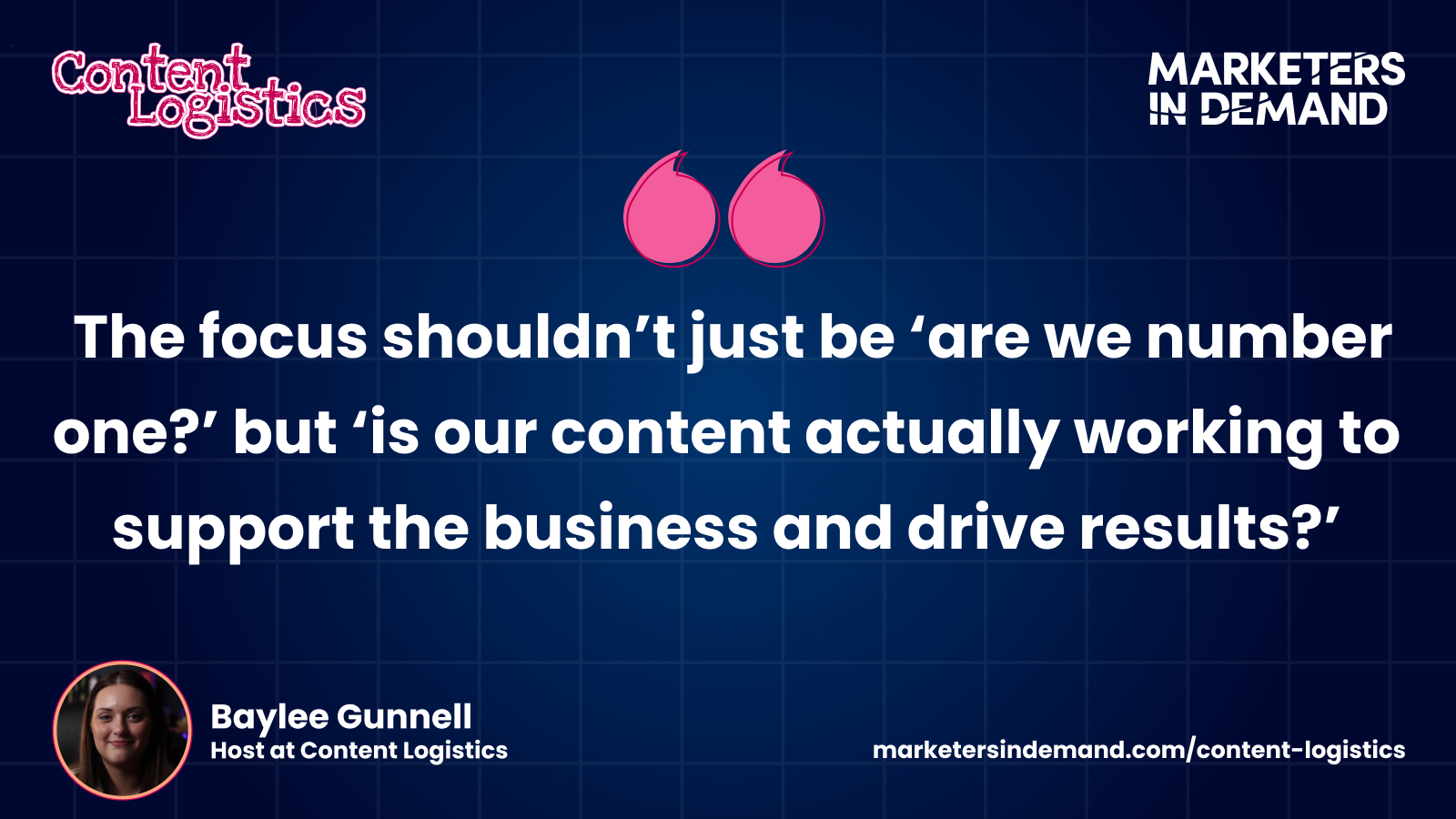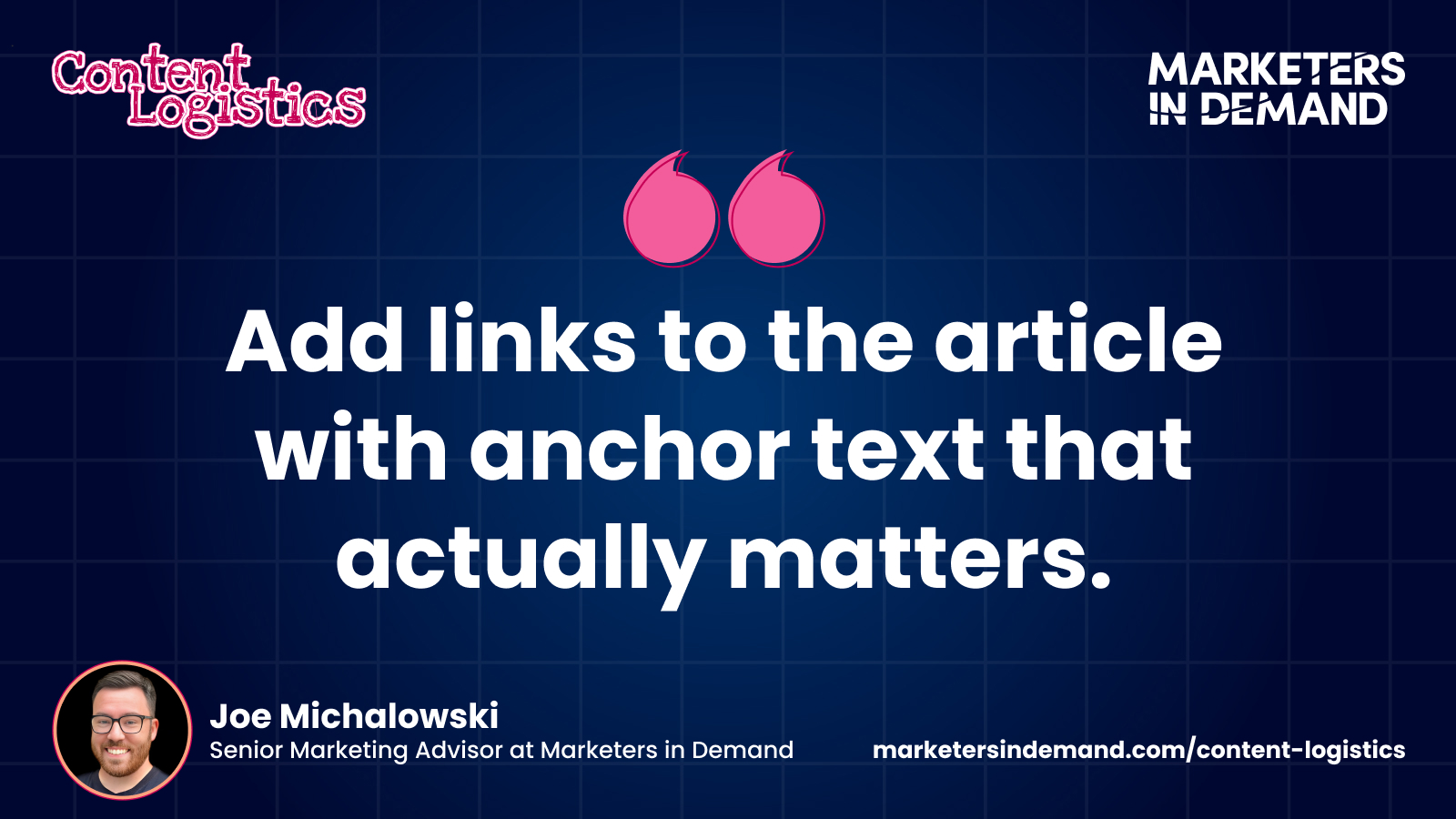Introduction
SEO can feel overwhelming, especially for small B2B marketing teams juggling multiple priorities. There’s an endless stream of advice about keywords, backlinks, and ranking factors, but not everything matters equally.
The key to B2B SEO success? Start by answering your customer’s questions. When you create useful, well-structured content, search engines will reward you.
In this SEO starter guide for B2B, we’ll cover:
- What SEO is and why it matters
- The core SEO fundamentals that drive real results
- Common mistakes to avoid
- A practical SEO checklist to get started
Let’s simplify SEO and focus on what actually moves the needle.
What SEO Actually Is (And Isn’t)
SEO (Search Engine Optimization) is the practice of making your website more visible on search engines like Google so potential customers can find you.
How Search Engines Work
Google organizes the internet like a giant digital library, ranking pages based on:
✔ Relevance – Does the content answer the search query?
✔ Authority – Do other reputable sites link to it?
✔ User Experience – Is it structured, fast, and mobile-friendly?
What Is the SERP?
The Search Engine Results Page (SERP) displays ranked results based on these factors. Traditionally, SEO aimed for the top 10 results, but today, AI-generated answers, snippets, and knowledge panels have changed how visibility works.
The Real Purpose of SEO
SEO isn’t about gaming the system—it’s about helping the right people find the right content. When search engines recognize your page as the best resource on a topic, they’ll show it to more users.
Start With Customer Questions, Not Keywords
One of the biggest SEO mistakes is starting with keyword research instead of real customer needs.
Why Customer Questions Matter More Than Keywords
Your audience isn’t searching for keywords; they’re looking for answers to specific problems. Instead of chasing high-volume terms, focus on common customer pain points and industry questions.
How to Find the Right Topics
- Talk to Sales & Support Teams – What problems do customers ask about the most?
- Review Customer Emails & FAQs – What keeps coming up in conversations?
- Check Industry Forums & Competitor Content – What discussions are trending?
Content First, Keywords Later

Instead of forcing keywords into content, write valuable content first, then optimize it. For example, if customers ask, “How do I measure marketing ROI?”, write an article answering that, then incorporate relevant keywords naturally.
By focusing on real questions, you’ll create content that resonates with your audience and ranks organically.
Key B2B SEO Fundamentals
SEO doesn’t require technical mastery—it requires smart prioritization. Here are the three fundamentals that matter most:
1. Content That Ranks: Parent Topics vs. Subtopics
Google prioritizes topics over individual keywords. Instead of publishing multiple short posts on similar subjects, consolidate them into one comprehensive guide.
Example:
🚫 Multiple pages on “What is financial modeling?”, “Financial modeling templates,” and “Best practices”
✅ One in-depth guide covering all subtopics under “Financial Modeling”
2. On-Page Optimization Essentials
A well-structured page helps both search engines and users. Here’s what matters most:
- Use One H1 Per Page – Clearly define the main topic.
- Organize Content with H2s & H3s – Helps Google and improves readability.
- Use internal linking – Make sure pages aren’t orphaned and optimize the anchor text.
3. Authority Building Through Backlinks
Backlinks—links from other websites to yours—signal trust and credibility to search engines.
Quality Over Quantity:
🚫 100 random backlinks from low-quality sites
✅ 5 strong backlinks from trusted, industry-relevant sources
Instead of chasing links, create link-worthy content, like industry research, expert insights, or in-depth guides.
Common SEO Pitfalls to Avoid
1. Sticking to a Strict Publishing Schedule Instead of Prioritizing Quality
Publishing frequently won’t help if the content isn’t valuable. Instead of focusing on quantity, ask: Is this the best possible resource on the topic?
2. Creating Separate Pages for Similar Topics
Too many similar pages compete against each other (a.k.a. content cannibalization). Instead, consolidate similar content into one authoritative page.
3. Obsessing Over Technical SEO Too Early
For small teams, technical SEO should come after content quality and structure. Prioritize:
- Readable, well-organized content
- Mobile-friendly pages
- Internal links between related content
4. Chasing High-Volume Keywords Instead of Search Intent
A broad keyword like “Marketing automation” may get traffic, but a more targeted topic like “How to measure ROI in marketing automation” will bring in the right audience.
Realistic SEO Timelines & Expectations
SEO is a long-term investment. Here’s what to expect in the first 6 months:
- Months 1-2: Publish high-quality, well-structured content.
- Months 3-4: Some pages begin ranking for low-competition topics.
- Months 5-6: Increased organic traffic and visibility.
For competitive keywords, expect 12+ months before reaching top rankings.
Fastest SEO Wins for Small Teams

- Optimize existing content – Updating old blogs often yields quicker results than new ones.
- Improve internal linking – Connect related content for better navigation.
- Repurpose content – Turn blog posts into videos, infographics, or LinkedIn articles to extend reach.
SEO is a marathon, not a sprint—but with the right strategy, you’ll get results.
SEO Checklist
This SEO checklist will help you focus on what matters most and avoid getting lost in the weeds of unnecessary tactics.
Content
- Does this content answer a real customer question? Make sure the topic you’re addressing matches your audience’s pain points and needs.
- Is the content well-structured and easy to read? Use short paragraphs, clear subheadings, and bullet points for skimmable content.
- Is the content comprehensive and authoritative? Does it fully answer the question? Make sure to cover all angles so Google sees it as the best resource on the topic.
- Have I included internal links to other relevant pages? Link to other pieces of content on your site that provide additional value. This helps Google crawl your site more effectively.
SEO Optimization
Once you’ve created content that meets customer needs, it’s time to optimize it for search. Here’s your checklist for on-page SEO:
- Is the H1 clear and optimized for the main topic? Your H1 tag should be the main title of the page, telling both Google and your readers exactly what the page is about.
- Have I used relevant keywords naturally throughout the content? Keywords should flow naturally within the content, but don’t force them. Focus on search intent rather than keyword stuffing.
- Are the title tags and meta descriptions compelling? Your title tag should clearly summarize the content in under 60 characters. The meta description should be a concise summary (150-160 characters) that encourages clicks.
- Have I included image alt text and optimized for accessibility? Use descriptive alt text for images to improve accessibility and help search engines understand what your images are about.
Staying on Track
- Set a regular schedule to audit and improve existing content.
- Monitor your performance with analytics tools and tweak strategies based on data.
- Be patient—SEO takes time, but with consistency, the rewards will follow.
Conclusion
SEO doesn’t have to be complicated. By focusing on customer questions, content quality, and structured optimization, small teams can achieve meaningful SEO results without chasing trends or overloading resources.
Key Takeaways:
- Start with real customer questions, not keyword research.
- Structure content around parent topics instead of individual keywords.
- Prioritize readability, organization, and on-page optimization.
- Earn backlinks by creating genuinely useful, authoritative content.
- SEO takes time, but smart, consistent efforts will drive long-term success.
Want to improve your SEO strategy? Start by answering the questions your audience is already asking. The rankings—and the results—will follow.
Frequently Asked Questions
1. How long does SEO take to show results?
SEO is a long-term strategy. Most websites start seeing results within 3-6 months, but competitive keywords can take 12+ months to rank. The key is consistent, high-quality content and ongoing optimization.
2. Do small B2B businesses really need SEO?
Yes! SEO helps small B2B companies attract the right audience organically, reducing dependency on paid ads. If your ideal customers use Google to research solutions, SEO is essential.
3. What’s more important—keywords or content quality?
Content quality comes first. Instead of starting with keyword research, focus on answering real customer questions. Once the content is strong, optimize it for relevant keywords naturally.
4. How often should I publish new content for SEO?
Publishing frequency isn’t as important as content quality. One high-quality, well-structured post per month can be more effective than four low-quality posts. Prioritize depth over volume.
5. How do backlinks impact SEO rankings?
Backlinks signal authority and trust to Google. Earning links from reputable, industry-relevant sites improves rankings more than a high number of low-quality links.
6. What’s the fastest way to improve SEO rankings?
If you need quick wins, focus on:
- Optimizing existing content (update old posts with new insights)
- Improving internal linking (connect related content for better navigation)
- Boosting page speed (faster sites rank better)
7. Is SEO still relevant with AI-powered search results?
Yes! AI-driven search features don’t replace SEO—they change how search works. Content that directly answers search intent and provides value will still rank and attract traffic.







